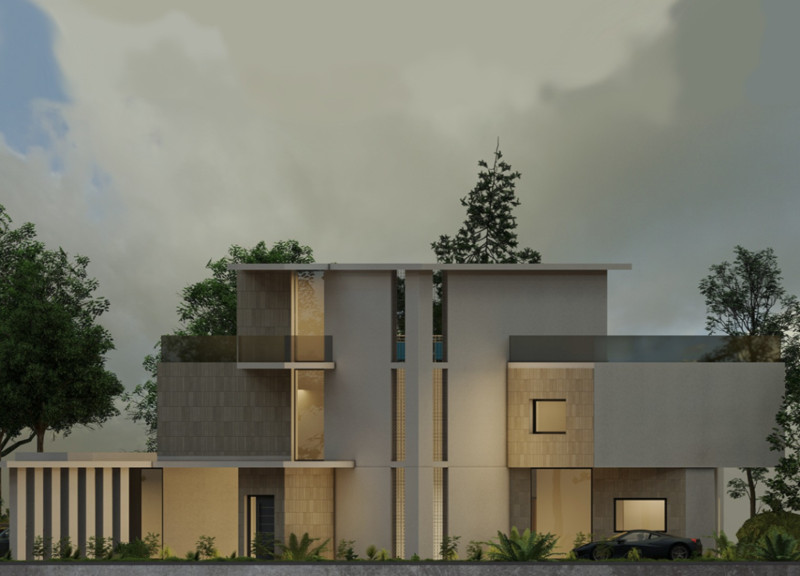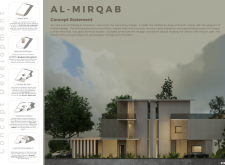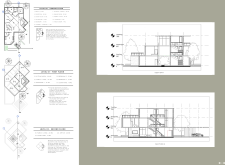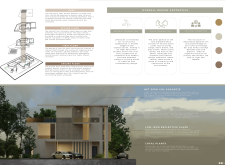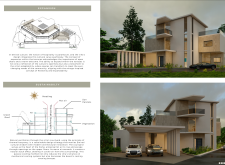5 key facts about this project
### Project Overview
Located in an area rich in historical significance, the Al-Mirqab villa integrates Emirati cultural elements with contemporary architectural practices. The design theme, inspired by the concept of a mirage, shapes both the aesthetic qualities and functional aspects of the residence, facilitating a modern living experience while honoring traditional values.
### Spatial Strategy
The villa is organized across three distinct levels, each addressing specific residential needs while promoting connectivity with the outdoor environment.
- **Ground Floor**: An open-plan configuration allows for fluid transitions between indoor and outdoor spaces, centered around a diamond-shaped courtyard that serves as a focal point for natural light and ventilation.
- **First Floor**: Designed for privacy, this level contains bedrooms along with a family sitting area, ensuring comfort and seclusion while maintaining a connection to the courtyard below.
- **Second Floor**: Features an expansive open-air terrace that offers views of the surrounding landscape, further enhancing the living experience.
The incorporation of terraces throughout the design reflects the cultural importance of hospitality in Emirati society, encouraging openness and adaptability to communal gatherings.
### Materiality and Sustainability
The material selection for Al-Mirqab emphasizes sustainability and local resource utilization.
- **Limestone**: Sourced from the UAE, this material provides thermal efficiency and a sense of luxury.
- **Net Zero CO2 Concrete**: This material reduces the carbon footprint associated with traditional concrete production, aligning with sustainable construction practices.
- **Low-Iron Reflective Glass**: This glazing option not only enhances aesthetic appeal but also incorporates recycled content, minimizing environmental impact.
- **Local Vegetation**: The landscaping features native plant species, promoting ecological resilience and adaptation to the arid climate.
In addition to traditional aesthetics, these materials establish a dialogue between the villa and its environmental context, reinforcing both ecological responsibility and cultural relevance.
### Innovative Design Features
Al-Mirqab is distinguished by its dynamic architectural form and innovative solutions that reflect cultural significance.
- **Architectural Form**: The stacked and rotated structure presents a striking visual identity, deviating from conventional villa designs in the region.
- **Adaptability**: Interiors are configured to support flexible use, mirroring the Emirati cultural emphasis on hospitality and communal interaction.
Overall, the design prioritizes effective natural ventilation and energy efficiency, incorporating features such as solar panels and a strategically designed courtyard to optimize thermal performance while enhancing occupant comfort.


